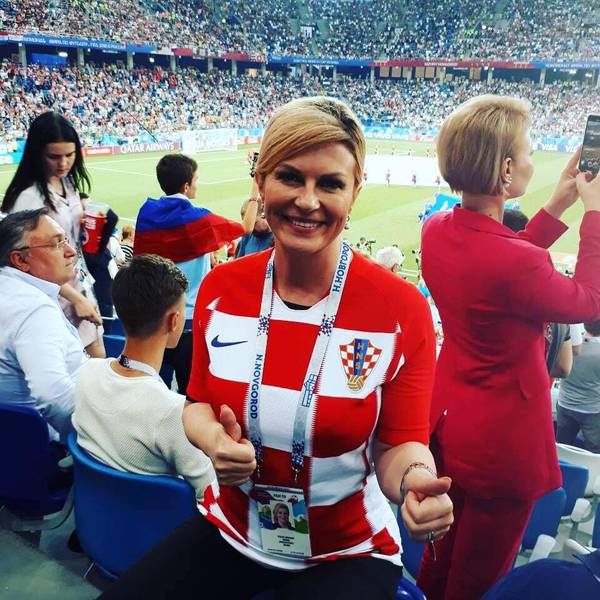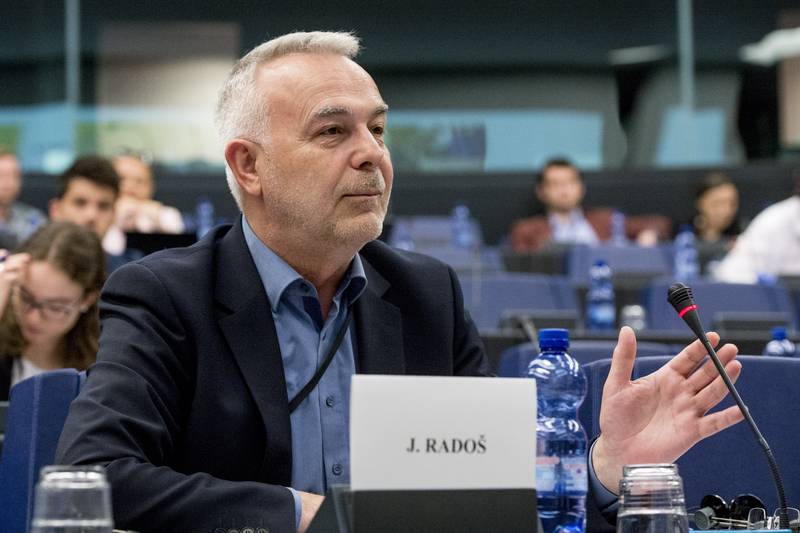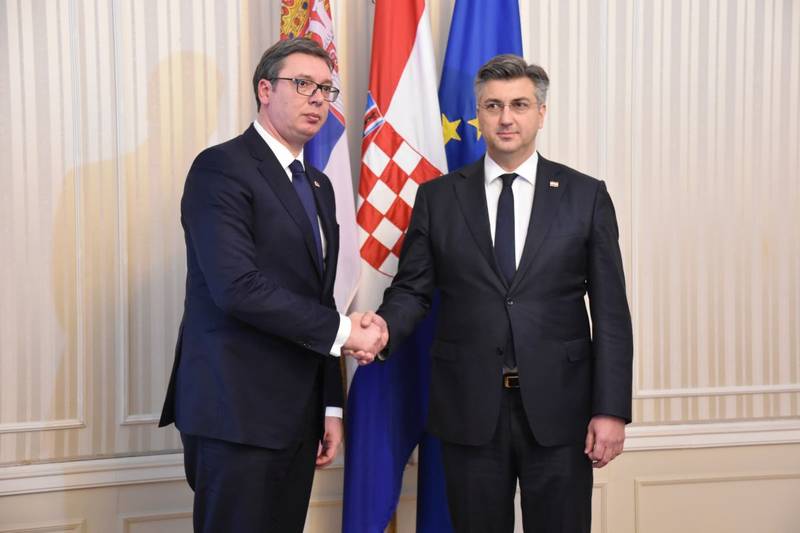Croatia Hopes To Reach Poland's EU Funds Absorption Rate
Adelina Marini, August 31, 2012
 As of the 1st of January 2013 Croatia will be with new statistical territorial classification, presented on August 29th by Branko Grcic, deputy prime minister and minister for regional development and EU funds, and Vesna Pusic, minister for foreign and EU affairs. The aim of the change is the country to prepare for absorption of EU funds after joining the EU on the 1st of July 2013. The changes concern only the second component of the territorial classification, known in the EU as NUTS. This nomenclature has three main components depending on the size of the regions:
As of the 1st of January 2013 Croatia will be with new statistical territorial classification, presented on August 29th by Branko Grcic, deputy prime minister and minister for regional development and EU funds, and Vesna Pusic, minister for foreign and EU affairs. The aim of the change is the country to prepare for absorption of EU funds after joining the EU on the 1st of July 2013. The changes concern only the second component of the territorial classification, known in the EU as NUTS. This nomenclature has three main components depending on the size of the regions:
- NUTS I - covers a minimum number of 3 million people population and a maximum of 7 million, which quite often covers entire countries;
- NUTS II - those are smaller units with a minimum requirement for population of 800 000 to 3 million people;
- NUTS III - are the smallest units where the minimum threshold is 150 000 and the ceiling 800 000.
That classification is very important for receiving money from the structural funds of the EU because the biggest spending is in regions where the gross domestic product  per capita is less then 75% of EU average. Since 2007 Croatia has been divided into three parts: North-Western Croatia, Central and Eastern Croatia, and Adriatic Croatia. The flaws with that division, however, as Deputy Prime Minster Grcic explained, are that one third of the country (the North-Western part around Zagreb, the capital city) will not be eligible for funding because it is developed a way above the average. The city of Zagreb itself has a GDP of 110% of EU average and economically drags the adjacent municipalities but dooms them not to receive EU funding. Under the old division, North-Western Croatia has 78.3% of GDP from the EU27 average and population of 1 661 363 people. The region Central and Eastern Croatia has a low GDP of 45.5% and a little over a million and 300 thousand people. The Adriatic region has GDP of 62.1% of EU average and a million and 400 thousand people.
per capita is less then 75% of EU average. Since 2007 Croatia has been divided into three parts: North-Western Croatia, Central and Eastern Croatia, and Adriatic Croatia. The flaws with that division, however, as Deputy Prime Minster Grcic explained, are that one third of the country (the North-Western part around Zagreb, the capital city) will not be eligible for funding because it is developed a way above the average. The city of Zagreb itself has a GDP of 110% of EU average and economically drags the adjacent municipalities but dooms them not to receive EU funding. Under the old division, North-Western Croatia has 78.3% of GDP from the EU27 average and population of 1 661 363 people. The region Central and Eastern Croatia has a low GDP of 45.5% and a little over a million and 300 thousand people. The Adriatic region has GDP of 62.1% of EU average and a million and 400 thousand people.
 This is what led to the decision, already agreed with Eurostat and the European Commission. Under the new division, Croatia will be divided into a Continental part and an Adriatic region. This changes the picture as follows: Continental Croatia will have a GDP of 64.1% and population right below the ceiling of NUTS II of 2 960 157 people. Mr Grcic explained that because of the demographic situation in the country (for the first time this year the number of newborns is less than the number of the deceased) there is no danger the ceiling of 3 million people to be reached or surpassed. The Adriatic region remains unchanged. So, in the words of both Pusic and Grcic, there will be no place left ineligible for funding. Moreover - Minister Pusic specified that this division will secure funding for the country for the upcoming 14 years, meaning for the next two multiannual budgets.
This is what led to the decision, already agreed with Eurostat and the European Commission. Under the new division, Croatia will be divided into a Continental part and an Adriatic region. This changes the picture as follows: Continental Croatia will have a GDP of 64.1% and population right below the ceiling of NUTS II of 2 960 157 people. Mr Grcic explained that because of the demographic situation in the country (for the first time this year the number of newborns is less than the number of the deceased) there is no danger the ceiling of 3 million people to be reached or surpassed. The Adriatic region remains unchanged. So, in the words of both Pusic and Grcic, there will be no place left ineligible for funding. Moreover - Minister Pusic specified that this division will secure funding for the country for the upcoming 14 years, meaning for the next two multiannual budgets.
The negotiations on the financial perspectives for the period 2014-2020 are ongoing, under which for Croatia over 13 billion euros are envisaged. Branko Grcic underscored that in the first full year of the country's membership in the EU (as in 2013 the country will have only 6 months full fledged membership) Croatia will have at its disposal a billion and 100 million euros and the sum will grow by the end of the period.
A large part of these over 13 billion euros is planned for upgrade of the transport infrastructure of the country; for renovation of the railways which are not quite developed, they are in severe condition and are about to be privatised, but in Mr Grcic's words they are a major priority for Croatia and EU; the river and sea routes, as well as ports, will also funded with money from the structural funds. Croatia has the same problems which Bulgaria has still not solved in spite of its five-year long membership, with dung-hills. In the last hot week of August in Zagreb there was a brief garbage crisis because of a protest of the population in the region around the dung-hill in Jakusevac. For three days garbage was not transported to the dung-hill. Branko Grcic announced  that every regional dung-hill will be financed with EU funds. Another hot topic that is of concern for Croatia this summer is the drought and the total lack of investments in agricultural irrigation, although a large part of the pre-accession funds were spend for agriculture. This area too will be included in projects to be financed by the EU.
that every regional dung-hill will be financed with EU funds. Another hot topic that is of concern for Croatia this summer is the drought and the total lack of investments in agricultural irrigation, although a large part of the pre-accession funds were spend for agriculture. This area too will be included in projects to be financed by the EU.
After the new division was announced the first portions of criticism emerged. There are fears that some poorer areas will not be able to secure the necessary co-financing which, however, is a problem for the entire country because it is entering a tough period for the public finances and is afraid of a loss of its credit rating (BBB- according to Fitch, Baa3 according to Moody's, BBB- according to Standard & Poor's). Other concerns stem from the fact that the value of a euro is not the same across Croatia. For example, in an open letter to the government, the governor of the Viroviticko-podravska zupanja (region) Tomislav Tolusic points out that the money Croatia has to secure - 15 or 25 euros to get 75 euros from the EU - does not have the same value in the Eastern part of the country as in the north-western part. In his words, statistics does not take into account the vale of money, of property and the gross domestic product.
Mr Tolusic is convinced that with the new division in the next 14 years the economic gap between the poorer and the richer regions instead of diminishing, which is the first and main goal of the structural finds (the so called convergence), will increase significantly. Foreign and EU Affairs Minister Vesna Pusic said, though, that the new division provides equal opportunities for everyone to absorb money under better conditions. "Now, instead of paying 40 euros to get 60 euros, they will have to pay 15 euros to get 85% from the EU funds". Deputy Prime Minister Grcic for his part reiterated that all areas in the country will have an equal start. He also assured that the government had money for co-financing. Whether this is so will become clear in the coming years.
 Kolinda Grabar-Kitarovic | © KGK
Kolinda Grabar-Kitarovic | © KGK Jozo Rados | © European Parliament
Jozo Rados | © European Parliament Aleksandar Vucic, Andrej Plenkovic | © Vlada RH
Aleksandar Vucic, Andrej Plenkovic | © Vlada RH